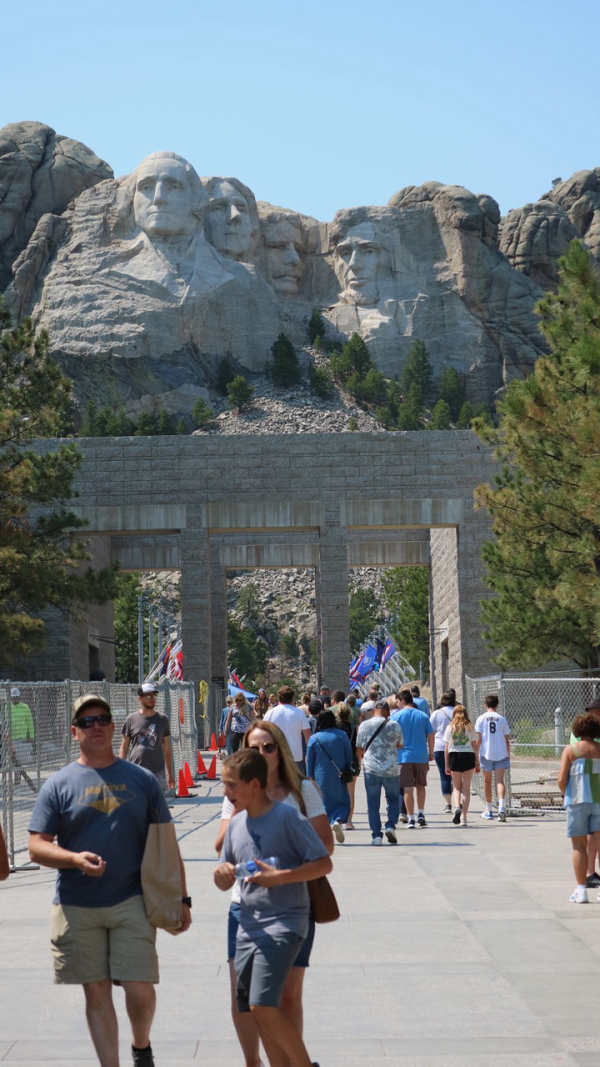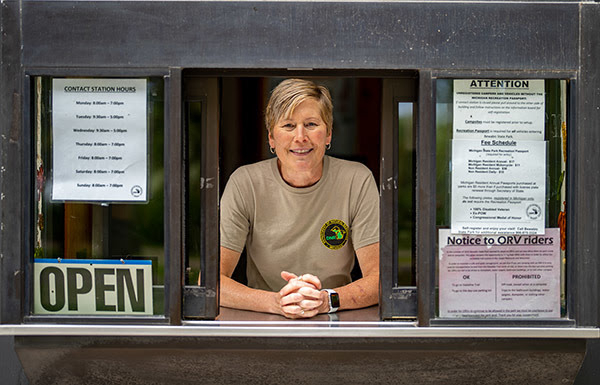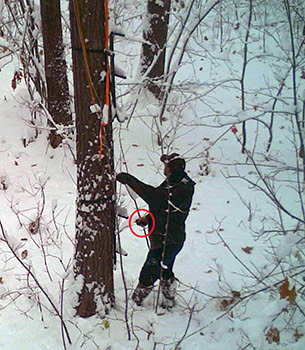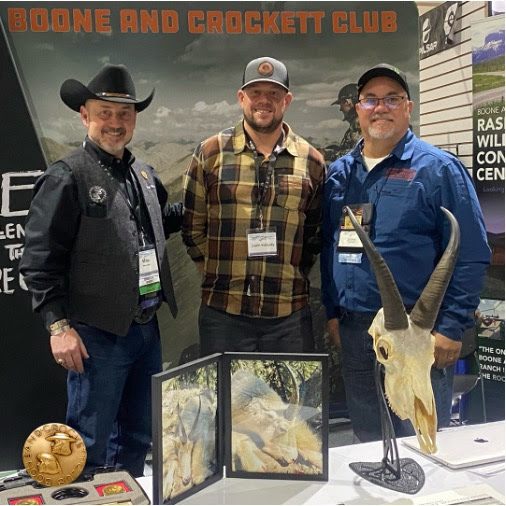MISSOULA, Mont. (January 13, 2023) – After convening a special judges panel today at the Wild Sheep Foundation’s 2023 Sheep Show in Reno, Nevada, the Boone and Crockett Club announced a new World’s Record Rocky Mountain goat. Justin Kallusky’s British Columbia billy officially scores 60-4/8 points, eclipsing the previous World’s Record by three points. Each horn measures well over 12 inches.
“This new World’s Record is truly a sight to behold,” said Mike Opitz, chair of the Special Judges Panel. “A Rocky Mountain goat of this caliber is a true testament to continued conservation efforts and one tough hunter.”
In 2019, Justin Kallusky and a friend were hunting Rocky Mountain goats along the Stikine River of northwestern British Columbia (B.C.). The Stikine is big water with steep canyons, loved by whitewater kayakers and hunters looking for adventure. “On that hunt, I told my friend there’s a goat over 12 inches in this spot,” Kallusky says. “It’s really good habitat.”
He returned in 2022 to see if his prediction would pan out. When he first spotted this billy, it was in an odd position. “It was bedded facing uphill and stuffed up under a rock to hide from the sun,” Kallusky says. The only thing they could see was a big goat butt, he adds. After four hours, the goat finally stood up, but something looked slightly off. “I asked my friend, ‘Why does his head look so small?’ I knew it was a good billy, but not until I walked up to it after the shot did I really understand.”
Kallusky with his Rocky Mountain goat taken near British Columbia’s Stikine River. The previous World’s Record was also taken near the Stikine River in 2011 by Troy M. Sheldon.
Kallusky, a do-it-yourself backcountry hunter from B.C., went on his first sheep hunt with his uncle when he was 15. Growing up, he was always drawn to the outdoors. While other kids watched Saturday morning cartoons, he would watch hunting shows. Now 42, Kallusky works as a lineman at BC Hydro and hunts every chance he gets. He wasn’t expecting to find the biggest Rocky Mountain goat in the book. “I’m not a trophy hunter by any stretch of the imagination,” he says. “I’m out there for the experience.”
After a hunter kills a Rocky Mountain goat in B.C., they are required to have it inspected by a provincial inspector. The biologist took one look at the goat and said Kallusky needed to talk with Grant Markoski, a local Boone and Crockett Official Measurer.
When they met, Kallusky thought Markoski was going to have a heart attack. “I pulled this goat head out, and this old boy almost had a jammer,” Kallusky says. “He put his hands on his head and started walking around in circles.”
Markoski has been a Boone and Crockett Club Official Measurer since 1991. During his three decades of service, he’s measured quite a few goats, though nothing prepared him for this billy. “When I saw this thing, I could not believe it,” Markoski says. “It was so much bigger than anything I’ve ever seen. When you see it, your jaw will drop.”
The Importance of Records in Big Game Management
When you enter your trophy into the Boone and Crockett system, you aren’t just honoring the animal and its habitat. You are participating in a data collection system that started in the 1920s and was refined by Club members in 1950. Today, there are nearly 60,000 trophy records. By establishing a records database more than 70 years ago, the Boone and Crockett Club established a scientific baseline from which researchers can use to study wildlife management. If you’re still on the fence about entering your trophy, we encourage you to read Why Should I Bother to Enter My Trophy. To the best of our ability, we ensure that the trophies entered into the records were taken in accordance with the tenets of fair chase ethics. Despite what some may think, the Boone and Crockett records are not about a name or a score in a book—because in the end, there’s so much more to the score.
About the Boone and Crockett Club
Founded by Theodore Roosevelt in 1887, the Boone and Crockett Club promotes guardianship and visionary management of big game and associated wildlife in North America. The Club maintains the highest standards of fair chase sportsmanship and habitat stewardship. Member accomplishments include enlarging and protecting Yellowstone and establishing Glacier and Denali national parks, founding the U.S. Forest Service, National Park Service and National Wildlife Refuge System, fostering the Pittman-Robertson and Lacey Acts, creating the Federal Duck Stamp program, and developing the cornerstones of modern game laws. The Boone and Crockett Club is headquartered in Missoula, Montana. For details, visit www.boone-crockett.org.









